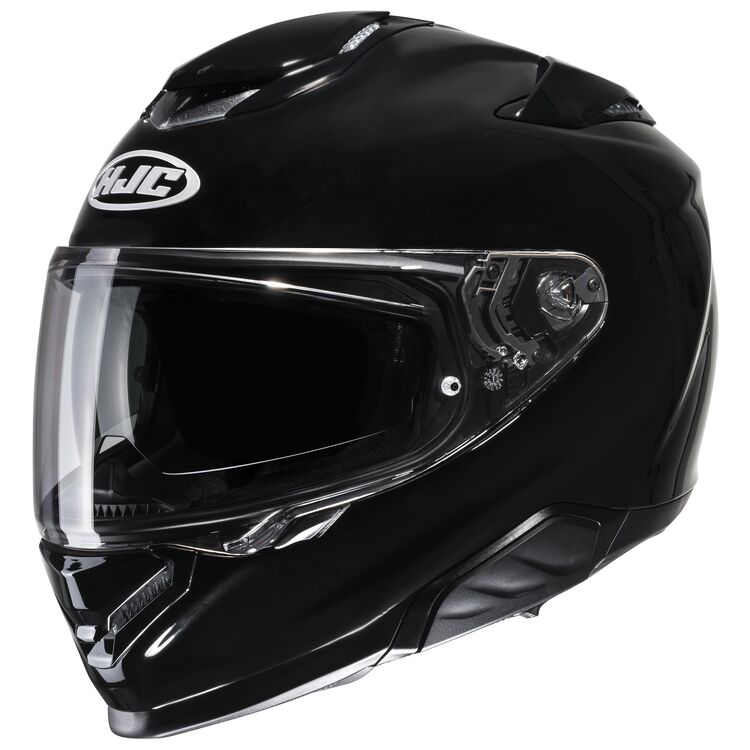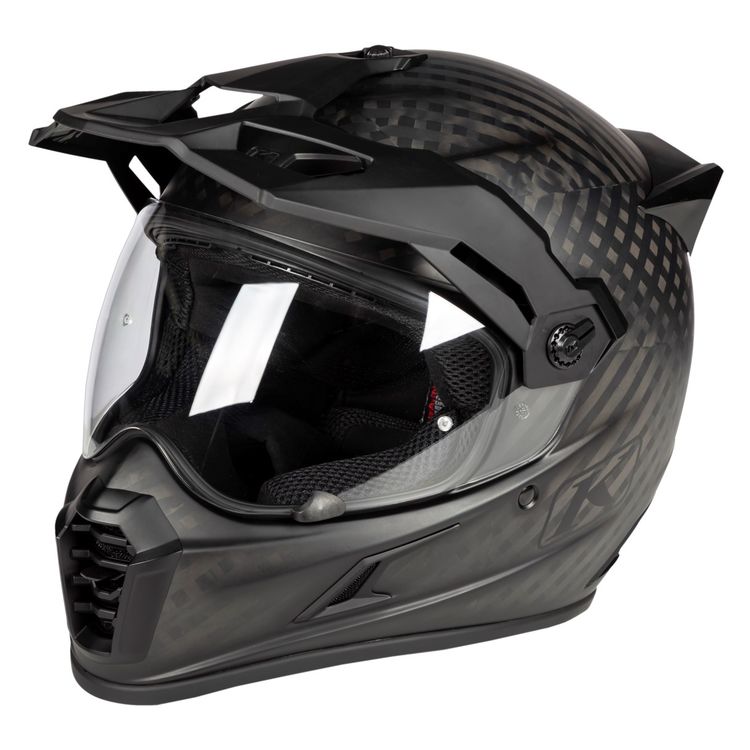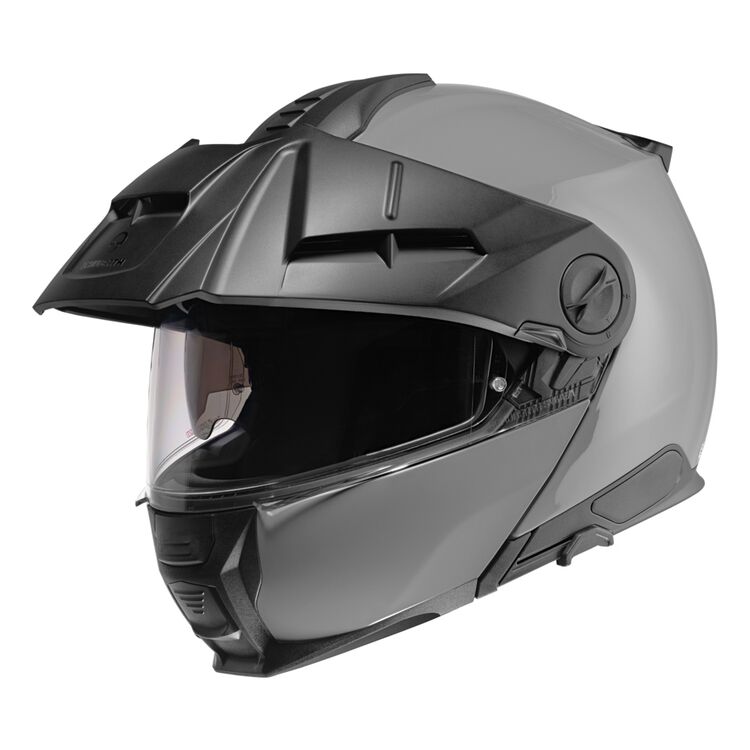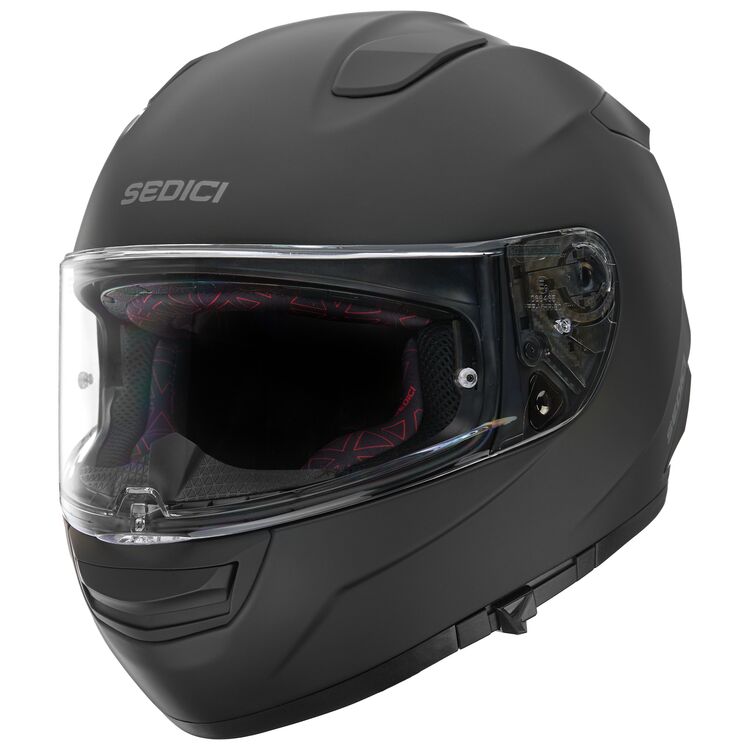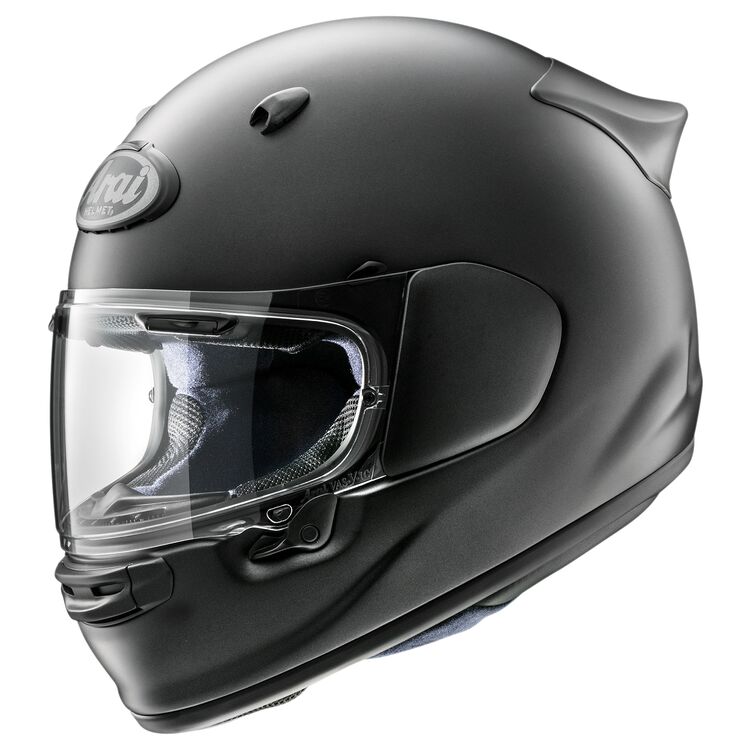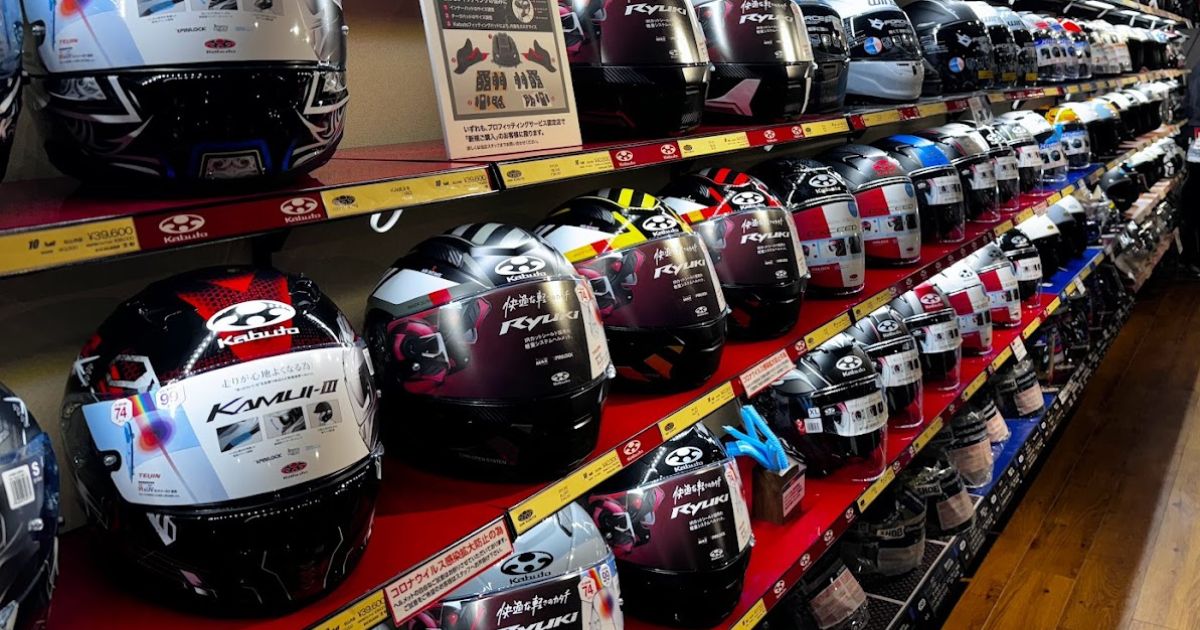
Stay Cool: Best Ventilated Motorcycle Helmets 2025
left for contents
I’ve spent most of my life (and done most of my riding) in Thailand, where heat is not a season, it’s a fact of life. I’ve seen far too many riders trim down their helmet or forego one entirely due to the blistering heat here.
It took me riding through the Salton Sea desert in July 2022 to realize that a well-ventilated motorcycle helmet (like my Shoei RF-SR at the time) can actually keep your head cooler than no helmet at all!
So don’t let the heat ruin your ride or make you forget to ride with the protection of a helmet.
This guide digs into seven helmets that stand out for ventilation in 2025. Whether you’re heading to the track, crossing state lines for a week‑long tour, or just commuting across town, there’s a lid here to keep you comfortable in the heat.
Which Helmet Fits Your Riding Style?
Here are our top picks, each built for a different type of rider. Use this quick guide to match your priorities with the right helmet before reading the full reviews:
A full‑face touring lid with a drop‑down sun visor and redesigned upper and lower vents. Perfect when you want all‑day comfort without sacrificing quietness.
Blends race‑inspired aerodynamics with plush touring comfort. Its dual chin intakes and exhaust spoiler provide smooth airflow while staying whisper‑quiet.
A mid‑price helmet with front and top vents that direct air across the visor and through the shell. Great if you want the convenience of an internal sun visor without paying premium prices.
An ultralight carbon‑fiber helmet with adjustable forehead and chin vents plus four exhaust ports. Perfect for riders who bounce between road and dirt and need maximum airflow, even if noise levels are higher.
Developed from MotoGP tech with seven intakes and six exhaust ports, this helmet is built for high‑speed airflow and stability on tucked‑in rides.
With those placements in mind, let’s see how each helmet’s ventilation design plays out on the road.
Shoei GT-Air 3 – Touring Comfort Meets Everyday Airflow
Shoei’s latest sport‑touring helmet didn’t just get a facelift—it received a total rework of its ventilation. The GT‑Air 3 features a tall, two‑stage upper intake that feeds air through generous channels molded into the EPS liner. Combined with a large lower intake that can be opened or closed easily with a gloved hand, the system pushes fresh air over your head and face before exiting through rear and neck vents. Shoei’s wind‑tunnel development shows; the helmet remains quiet, but you still feel a steady breeze on a hot day.
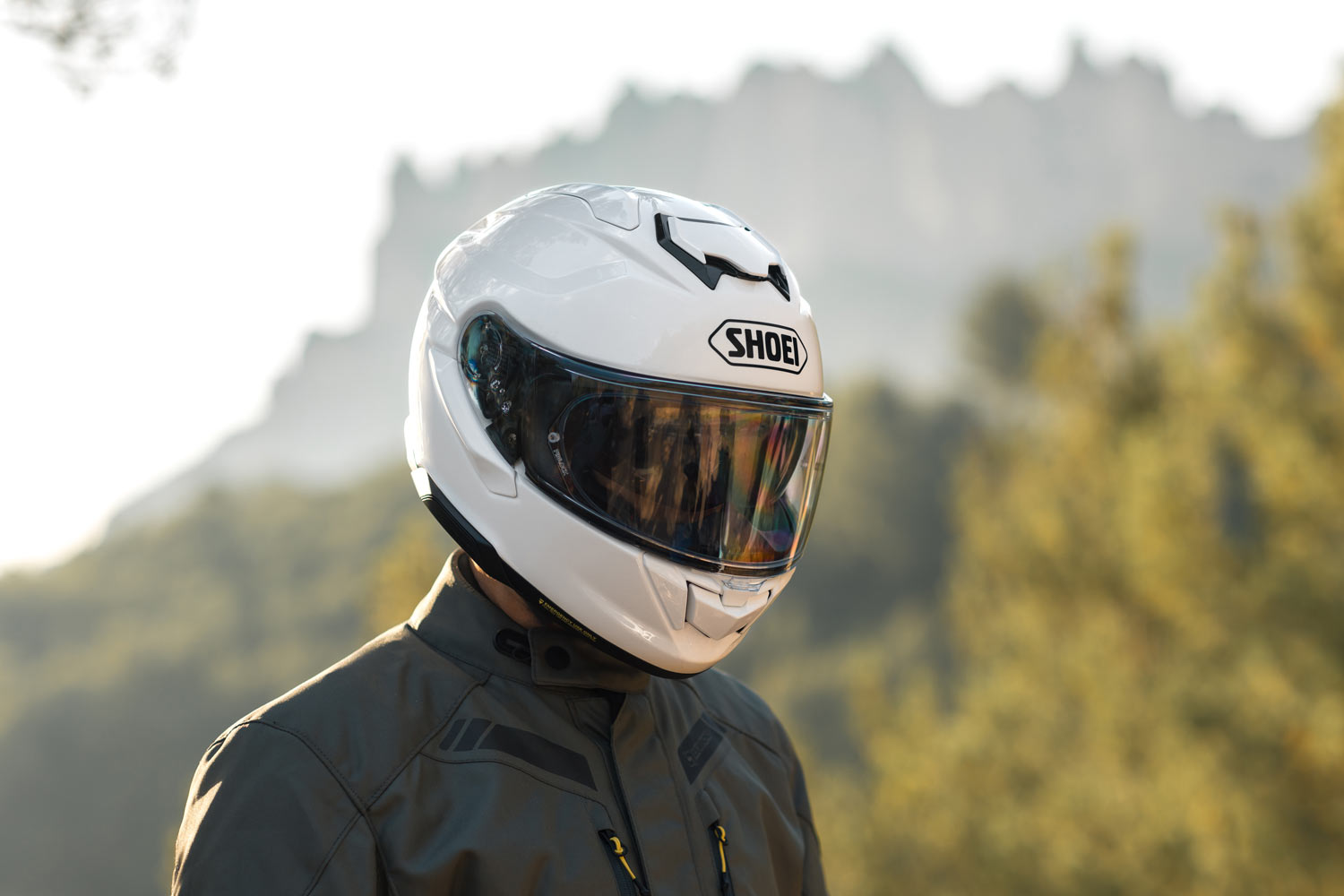
One trick feature is how the chin vent routes air across the inside of the shield, helping clear fog on chilly mornings. Opening the top intake fully produces a noticeable cooling effect without blasting your face—great when temperatures climb. Shoei’s optional drop‑down sun visor is another touring nicety that doesn’t compromise airflow.
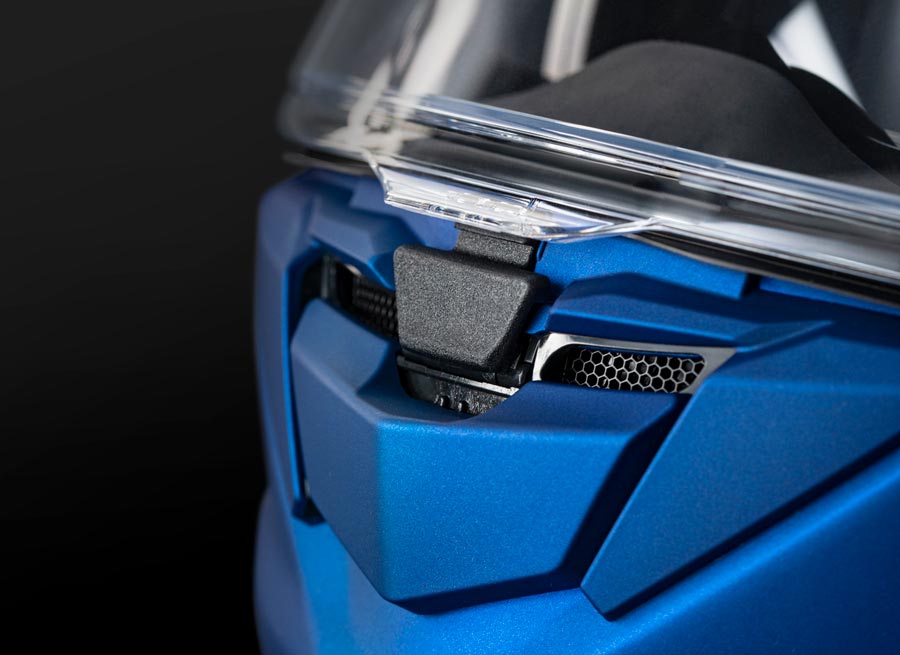
The downside? Shoei moved the visor tab to the center, which some riders (including me) find awkward when using an action camera. At 3.7 lb it’s a bit heavier than some carbon rivals, but that weight contributes to stability at highway speeds. If you want a lighter shell and are willing to give up the internal sun shade, the Shoei RF‑1400 or the HJC RPHA 71 below are worthy alternatives. Overall, the GT‑Air 3 earns high marks for ventilation without giving up the quiet, refined ride that Shoei owners expect.
A premium touring helmet built to disappear on long rides: plush liner, adjustable vents, thick neck-roll and tight sealing visor for that sweet sweet silence and an optically-clear drop down sun shield. Fits the SRL3 Sena comms system seamlessly.
- Super quiet
- Wind tunnel molded for smoother ride (less fatigue)
- Eyeglass compatible
- Internal sun shade and Pinlock visor
- A bit heavier than carbon‑shell alternatives
- Ratchet strap may irritate throat
Our Review: Here’s a featured test of the GT‑Air 3 through winter fog and humid summer rides, noting its effective dual‑stage vents and balanced airflow.
Schuberth S3 – Quiet Sport‑Tourer With Surprisingly Strong Airflow
Schuberth built its reputation on quiet, aerodynamic lids, and the S3 is no exception. What surprised us is how well it breathes. Two front intakes—one large top scoop and a smaller chin vent—direct air over your head and face. Internally, channels in the EPS liner move that air toward a redesigned rear spoiler that doubles as an extractor. Opening both vents gives you a noticeable flow while the helmet remains calm at speed.
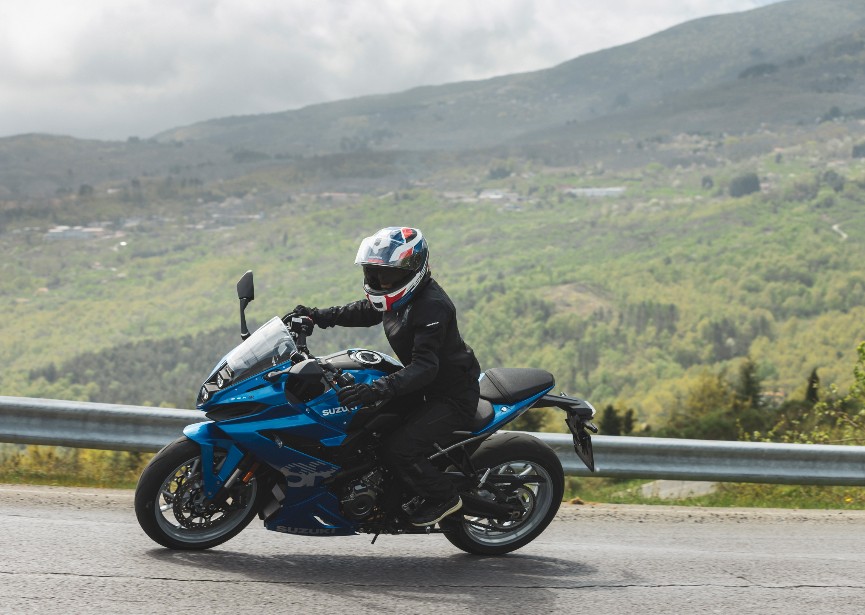
In our long‑term test we noted that the dual vents have firm detents and can be manipulated with gloves. The chin vent pushes air onto the inside of the shield to prevent fogging, while the top vent’s two positions let you fine‑tune how much cool air reaches your scalp. Despite this airflow, the S3 is among the quietest helmets in its class thanks to a plush neck roll and snug seal.
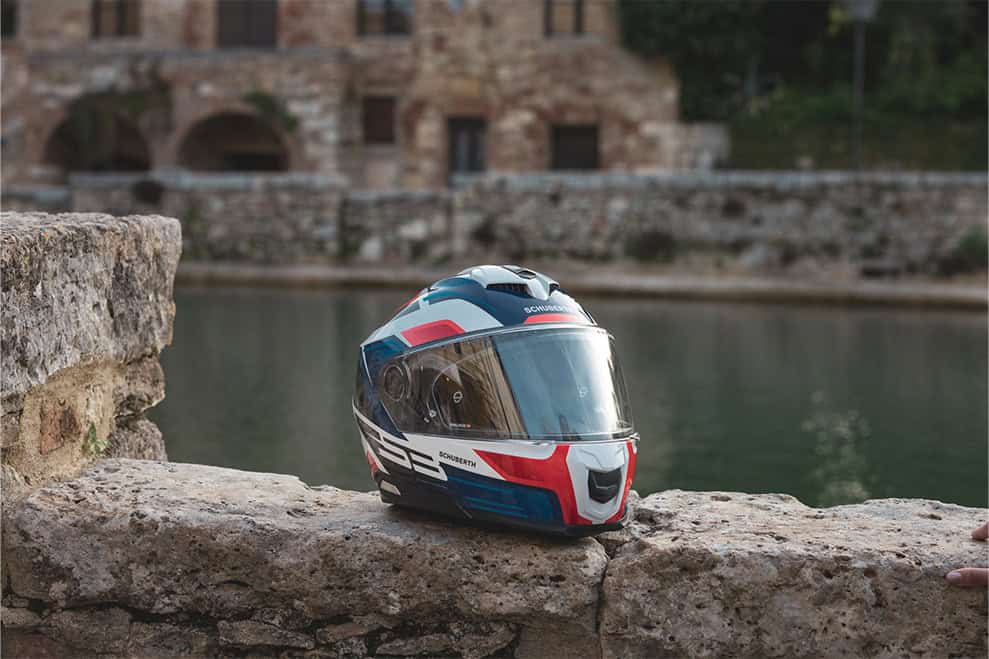
If we nitpick, the vent sliders feel a bit light, and riders with very round heads may find the S3’s European fit too snug. The built‑in drop‑down sun visor makes the helmet slightly heavier than some premium full‑face lids. Yet the weight enhances stability, and the integrated SC2 comms pockets make installation of Schuberth’s system a breeze. If you’re looking for modular convenience instead of a fixed full‑face, see the Schuberth E2 below.
A premium full-face touring helmet offering exceptional comfort, quietness, and advanced ventilation for long-distance riders.
- Outstanding ventilation system
- Integrated SC2 communication system ready
- Exceptional optical clarity with Pinlock 120
- Customizable fit with Schuberth's Individual Program
- High-quality build and finish
- Sun visor could extend further down
- Tight fit when putting on due to snug neck roll
Our Review: Our detailed S3 review explores how the dual intakes and spoiler work together for quiet cooling. Check it out if you’re cross‑shopping with Shoei or Arai.
HJC RPHA 71 – Value‑Focused Sport‑Touring With Plenty of Features
HJC’s RPHA 71 aims to deliver premium features at a mid‑level price. Its ventilation uses a two‑stage top scoop that feeds three holes drilled through the shell. At slow speeds you’ll feel a gentle breeze, while highway riding produces substantial airflow across the crown. The chin vent directs air up the inside of the visor to reduce fogging. Two always‑open rear exhaust ports create negative pressure to pull hot air out the back. This full front‑to‑back system matches many higher‑end lids.
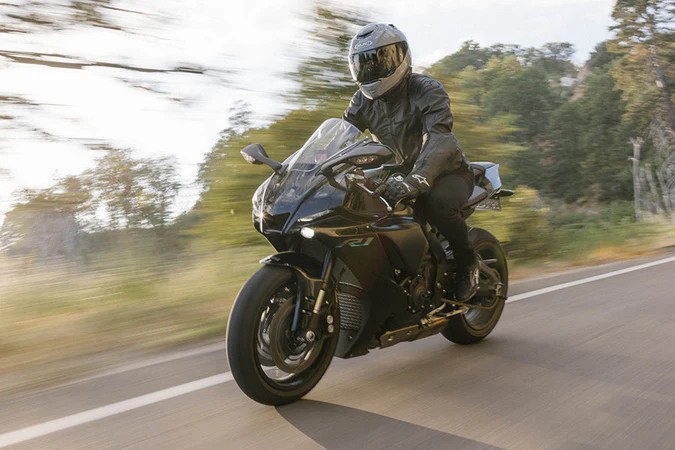
What sets the RPHA 71 apart is its integrated drop‑down sun visor and lightweight composite shell. HJC kept weight around 3.7 lb while providing a comfortable interior with a removable liner. In our experience, the helmet fits slightly wider than Shoei’s offerings, which will appeal to riders with rounder heads. Vent sliders operate smoothly, though fine adjustments can be fiddly with gloves. The noise level is respectable but slightly higher than premium options—a fair trade‑off for the lower price.
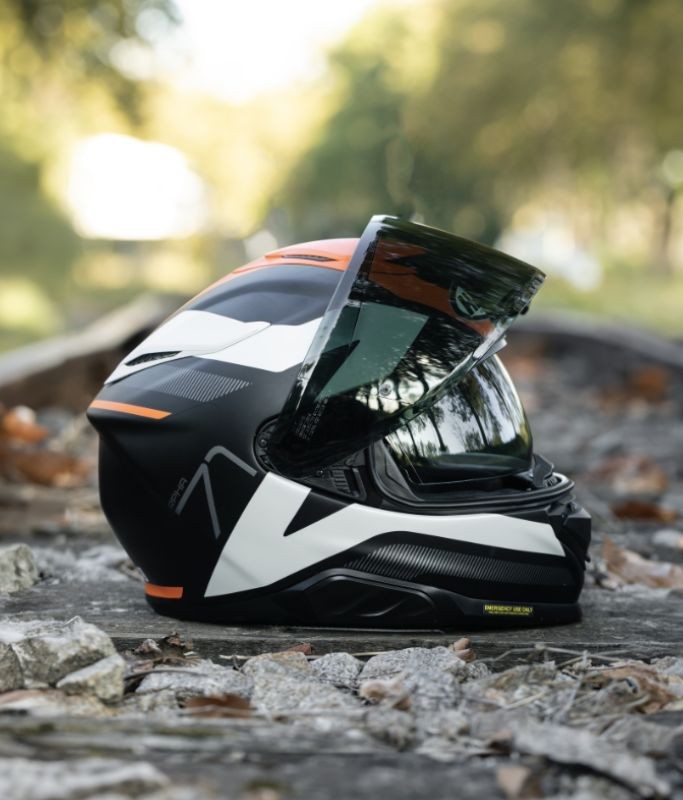
One drawback is that the RPHA 71 does not carry a Snell rating. If you’re a track junkie or demand Snell certification, look to the Shoei RF‑1400. The internal sun visor adds complexity and can occasionally rattle at high speed. Still, for riders who want a feature‑rich helmet under $550, the RPHA 71 provides ample ventilation and comfort with a nice sun shade built in.
A lightweight sport-touring helmet combining performance, comfort, and sleek design.
- Aerodynamic shell with excellent stability at high speeds
- Advanced moisture-wicking interior with removable padding
- Integrated sunshield and Pinlock-ready face shield for versatile visibility
- Bluetooth system compatibility requires separate purchase
Our Review: We have not yet completed a dedicated RPHA 71 review. In the meantime, our RF‑1400 review compares it briefly and notes that the HJC flows plenty of air but isn’t as quiet.
Klim Krios Pro – Featherweight ADV Helmet With Adjustable Vents
The Klim Krios Pro is a dual‑sport helmet built to handle everything from highway runs to rocky trails. Its full carbon‑fiber shell with Koroyd energy‑absorbing tubes keeps weight around 3.3 lb, making it one of the lightest ADV lids available. Ventilation is handled by a large adjustable forehead intake, an upper chin diffuser, a lower chin intake and four exhaust ports. On hot days, opening the forehead and chin vents floods your face with cooling air; on cooler rides you can close them to seal out drafts.

Riders appreciate the included Transitions photochromic visor, which adjusts to changing light without you swapping shields. The Krios Pro’s open‑flow design means it isn’t the quietest helmet—wind noise is part of the deal. Earplugs help, and many riders gladly accept the noise in exchange for the ventilation and light weight. The helmet also converts easily between street and off‑road use: remove the peak and add goggles for trail riding, then reinstall the peak and shield for highway touring.

If you want a quieter modular ADV helmet with better sealing, the Schuberth E2 above is the way to go. But for riders in hot climates or those who frequently ride off‑road, the Krios Pro’s airflow and weight savings make it hard to beat.
Our Review: Our Klim Krios Pro vs Scorpion AT960 comparison explains how its generous vents and Koroyd liner keep you cool but increase wind noise.
Shoei X‑Fifteen – Race‑Ready Airflow for the Street
Borrowed from MotoGP, the X‑Fifteen (X‑15) is the most ventilated helmet Shoei makes. Seven intake vents and six exhaust ports are strategically placed to work with its sculpted shell. When you tuck in behind a screen, air is rammed through forehead, brow and chin intakes and pulled out via ridged exhaust channels. Shoei’s engineers refined the shape in a wind tunnel to minimize drag and lift at speeds well above legal limits.
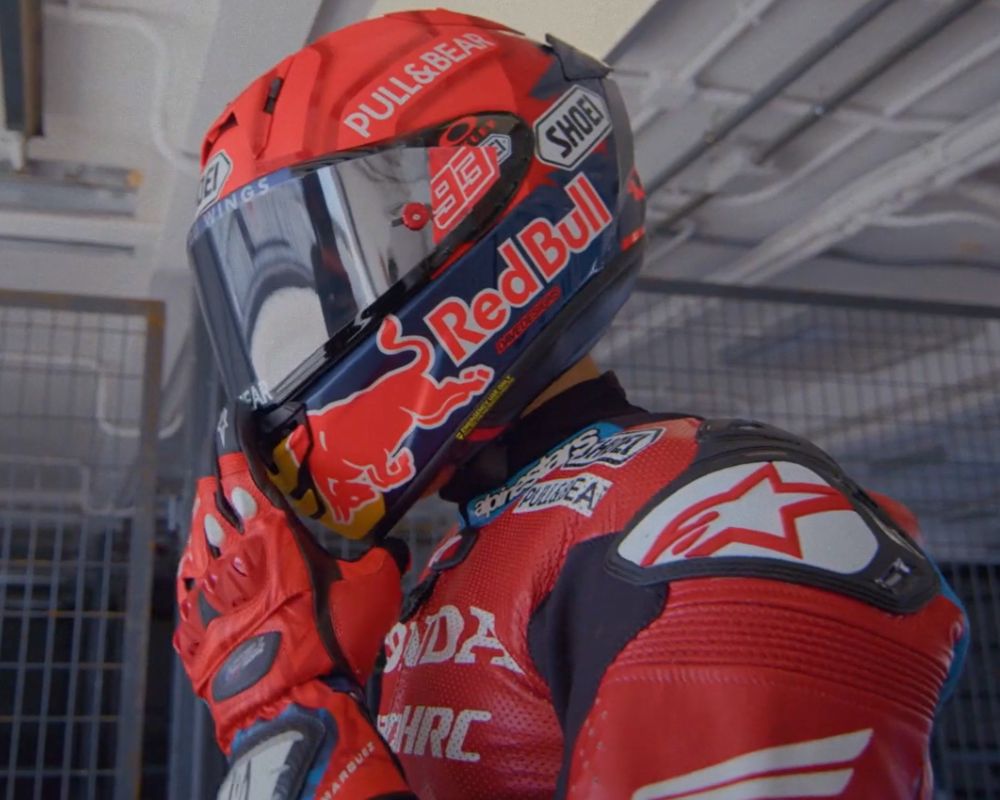
On the road this translates into immediate relief on hot track days; open the vents and you feel air rushing through the crown and cheek areas. The multi‑density cheek pads even feature their own intake channels to cool your face. If you ride at slower speeds or in colder weather, all the vents can be closed individually to keep warmth in.
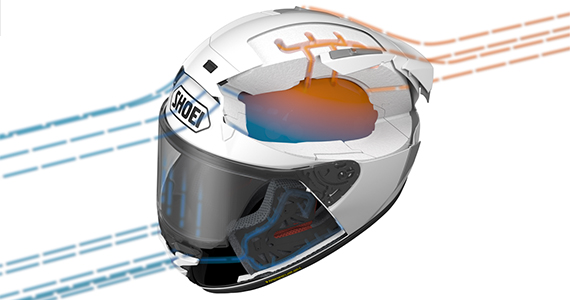
There’s a price to pay. The X‑Fifteen lacks a drop‑down sun visor and is heavier on the wallet than touring helmets. Noise levels are higher when the vents are wide open, and the snug race fit isn’t for everyone. But if you spend your weekends on track or enjoy spirited mountain rides, no helmet flows air like this one. A less expensive, more street‑oriented alternative is Shoei’s RF‑1400, which balances better everyday comfort with Snell certification and a quieter ride.
Race-grade protection meets long-ride comfort in the Shoei X-15 — a helmet built for high speed, wide visibility, and airflow that holds up on road or track.
- Excellent protection standards—DOT, ECE 22.06 & Snell M2020R certified
- Ventilation works well: 7 intakes + 6 exhausts for good airflow even in heat
- Large, adjustable visor/eye-port gives improved field of view over older models
- Interior is highly customizable: removable layers, adjustable pads for more precise fit
- Heavy compared to extreme carbon race-only helmets; bulk noticeable over long rides
- Visor detents & locking mechanisms are a bit unusual; takes getting used to
Our Review: Our story about the most expensive helmets explains how the X‑15’s MotoGP heritage and wind‑tunnel work contribute to its ventilation. It’s worth a read if you want to understand what you’re paying for.
Schuberth E2 – Modular Adventure Comfort With Redesigned Vents
Adventure touring demands a helmet that’s quiet, versatile and well ventilated, and the E2 delivers. Schuberth widened the top scoop and added a two‑stage slider for more adjustability. The chin vent has a large opening and a wire mesh to keep bugs out while channeling fresh air over your face. Like the S3, the E2 uses internal channels to spread that air across your head before exiting through multiple rear ports.

Our comparison with Scorpion’s AT960 found that the E2 flows more air than its predecessor but still runs warmer than open‑flow ADV helmets. The tight seal that makes the E2 so quiet also limits the amount of air that can pass through in extreme heat. That’s the trade‑off with any quiet helmet. On the plus side, the Pinlock 120 insert included with the E2 keeps the shield fog‑free even when the vents are cracked only part‑way.
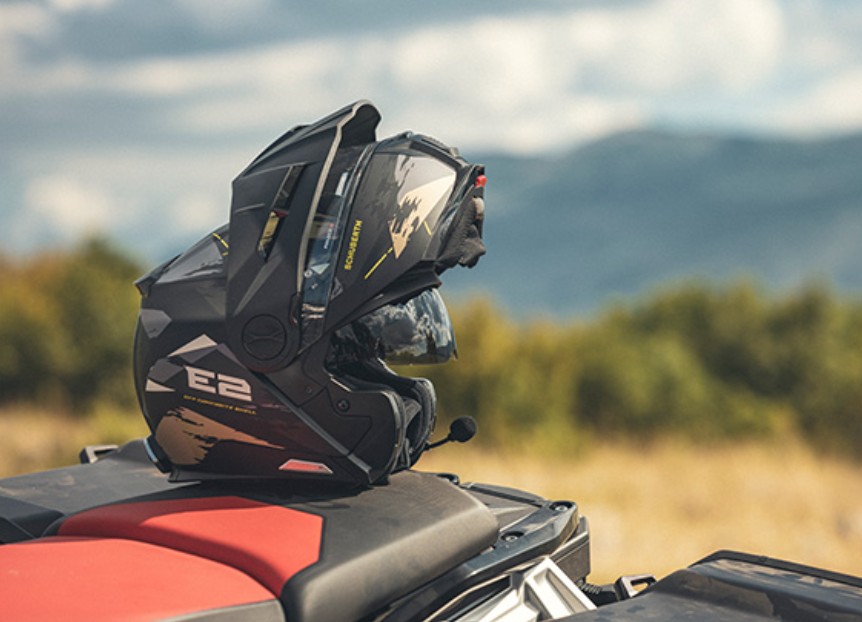
While the removable peak reduces glare off‑road, it can introduce some buffeting at highway speeds. The helmet’s weight—about 3.9 lb with the peak—is noticeable when you’re off the bike, but it feels balanced thanks to the composite shell. If you need more airflow and don’t mind extra wind noise, the Klim Krios Pro below is a better choice.
A high-performance modular helmet with a handcrafted fiberglass shell reinforced with carbon fiber for lightweight durability.
- Superior aerodynamics for reduced wind resistance
- COOLMAX interior for enhanced comfort and breathability
- Integrated Bluetooth-ready design for seamless connectivity
- At highway speeds, the peak may introduce minor buffeting
Our Review: Our E2 vs AT960 comparison covers how the E2’s redesigned vents perform in different climates and why some riders prefer the more open AT960.
Sedici Strada 3 – A Budget Lid That Punches Above Its Price
Sedici is RevZilla’s house brand, and the Strada 3 shows that insider knowledge can produce a great helmet at an affordable price. Unlike many sub‑$350 lids that use polycarbonate shells, the Strada 3’s shell is fiberglass composite, which is lighter and disperses impact more efficiently. With four shell sizes and six EPS liners, it avoids the bobble‑head look and fits a wide range of heads.

The real surprise is its ventilation. Three intake vents—two on the crown and one on the chin—channel fresh air through deep EPS channels and out three rear exhaust ports. You can close the intakes in cold weather, and the top sliders are shaped to reduce wind noise. A two‑position chin vent moves air across the shield and the rider’s face. Our budget helmet guide notes that the dual intake vents and four exhaust ports keep the interior surprisingly cool, even on warm commutes. The visor gasket provides a tight seal to keep turbulence and rain at bay.
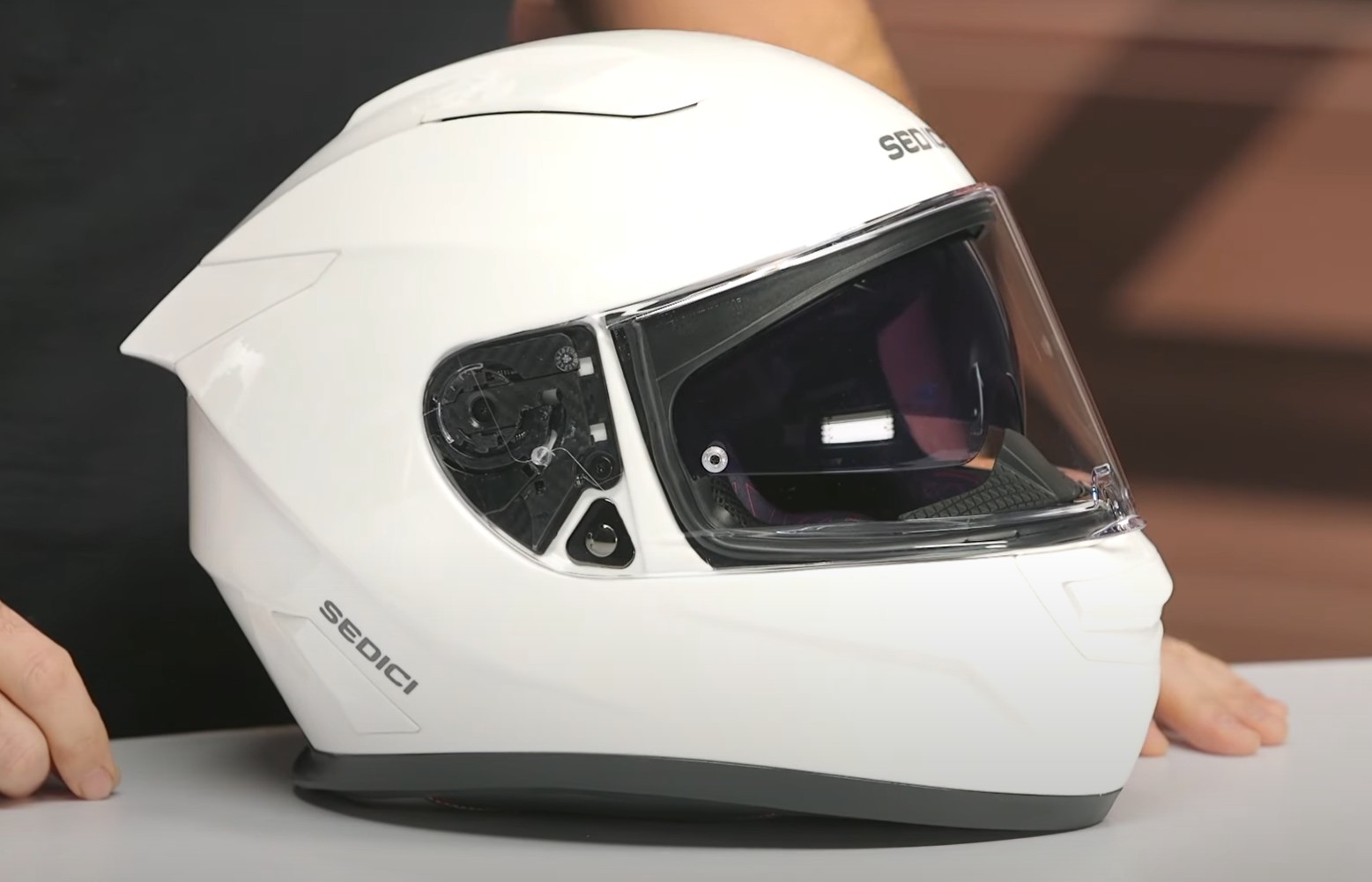
It isn’t perfect. The helmet runs slightly louder at highway speeds—a common trait of budget lids—and the Pinlock insert is sold separately. Still, you get a lot: a comfortable liner, composite shell, built‑in sun shade, and ventilation that rivals some helmets twice its price. For a sportier look with similar price and better noise isolation, consider the AGV K1 S, though you lose the internal visor and plush liner.
A budget-friendly full-face helmet offering thoughtful comfort and ventilation, with modern interior design and solid safety, ideal for entry-level and everyday riders.
- Strong ventilation keeps head cool
- Comfortable laser-cut interior fit
- Aerodynamic shell reduces drag
- ECE-certified for trusted safety
- Padding feels less plush
- Wind noise at higher speeds
Our Review: We haven’t yet published a deep‑dive on the Strada 3, but our budget roundup highlights its strong ventilation and value. Stay tuned for a dedicated review.
Arai Contour‑X – Everyday Comfort With 13 Ventilation Ports
Arai helmets are known for hand‑built quality and a unique round‑oval fit. The Contour‑X takes that craft and adds serious airflow. Thirteen ports—seven intakes and six exhausts—comprise the ventilation system. A 3D logo vent feeds two central intake channels, dual tear‑duct brow vents cool your forehead, and a two‑position sliding air scoop on the chin brings in a large volume of air. Hot air exits through a one‑piece rear spoiler with three exhaust channels, twin flush‑fit side vents and a neck exhaust. An adjustable chin vent with replaceable filter and twin brow vents allow you to tailor airflow.
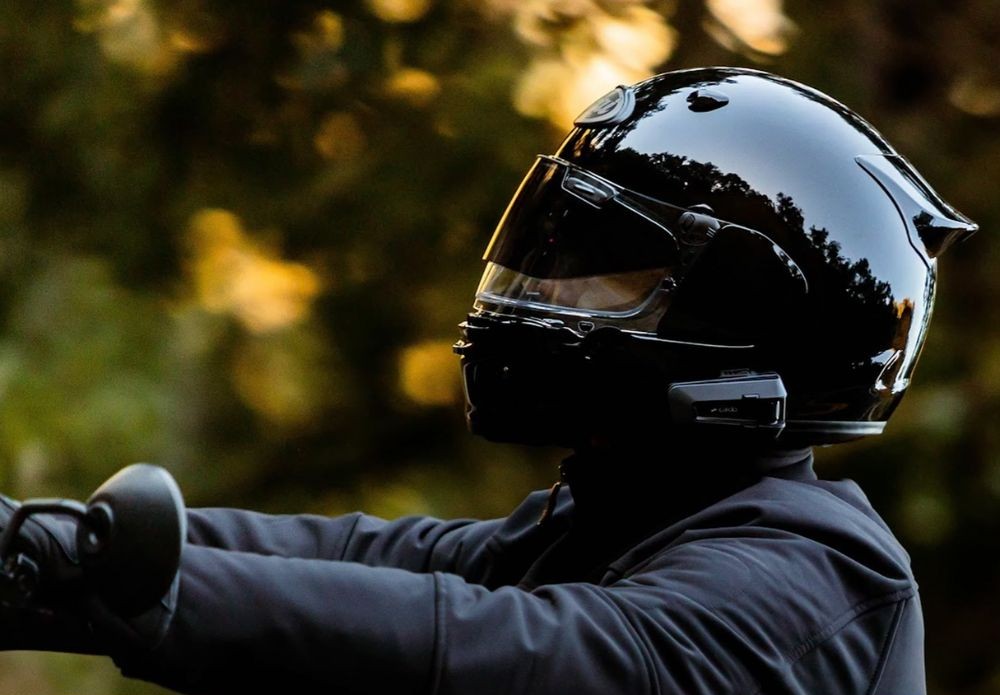
On the road the Contour‑X breathes like a much sportier helmet but retains Arai’s plush interior and quiet ride. The chin vent is easy to operate with gloves, and the exhaust spoiler smooths airflow and improves stability at speed. Because air enters through so many ports, you stay cool at low speeds—ideal for city riding. At highway pace the negative pressure from the spoiler pulls heat out effortlessly. Some riders report minor whistling when the brow vents are open, and the helmet is a little heavier than its composite rivals. The extra weight adds stability, though, and noise is kept in check by foam dams near the side exhausts.
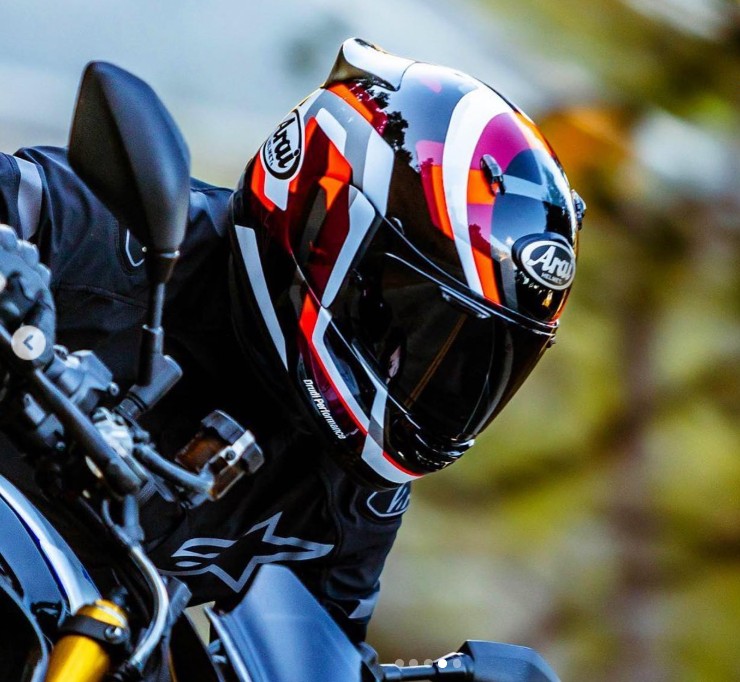
If you like Arai’s hand‑built fit but need a lighter helmet or integrated sun visor, consider the Arai Signet‑X or the Shoei GT‑Air 3 instead. Otherwise, the Contour‑X is one of the best ventilated Arais available today and a great choice for everyday riding.
Combining race-derived aerodynamics with touring comfort, the Arai Contour-X delivers strong protection, excellent airflow, and a plush liner that keeps you cool and comfortable on both daily rides and long hauls.
- Unmatched comfort thanks to ultra-soft liner & roomy 5 mm flare at base
- Great ventilation: 7 intakes + 6 exhausts pull cool air & reduce heat build-up
- Aerodynamic shell & spoiler reduce buffeting at highway speeds
- Integrated speaker pockets & wire channel make comms setup clean & easy
- Shield locking mechanism is a bit finicky and takes getting used to
- Raised logo vent can be hard to operate when wearing thick gloves
Our Review: We haven’t published a Contour‑X review yet. Check back on our site as we expand our Arai coverage.
Comparison Table
| Helmet | Riding style | Ventilation design | Approx. weight* | Price range* | Key features |
|---|---|---|---|---|---|
| Shoei GT‑Air 3 | Touring / commuting | Tall two‑stage top vent, large chin vent and rear exhausts | ~3.7 lb | $650–$700 | Drop‑down sun visor; quiet; comms‑ready |
| Schuberth S3 | Sport‑touring | Large top scoop, chin vent and rear extractor | ~3.6 lb | $600–$700 | Integrated sun visor; pre‑wired for SC2 |
| HJC RPHA 71 | Sport‑touring value | Two‑stage top scoop, chin vent & always‑open exhausts | ~3.7 lb | $500–$550 | Internal sun visor; composite shell |
| Klim Krios Pro | Dual‑sport / ADV | Adjustable forehead & chin vents plus 4 exhausts | ~3.3 lb | $699–$749 | Transitions visor; carbon + Koroyd; tool‑less conversion |
| Shoei X‑Fifteen | Track / sport | 7 intakes & 6 exhausts | ~3.8 lb | $930–$1,100 | Race fit; no sun visor; FIM/Snell cert |
| Schuberth E2 | Modular ADV | Wide top scoop, large chin vent & multiple rear ports | ~3.9 lb | $750–$800 | Flip‑up chin bar; Pinlock 120; removable peak |
| Sedici Strada 3 | Commuting / budget | Three intake vents and three exhausts with deep channels | ~3.5 lb | $300–$350 | Fiberglass shell; drop‑down sun visor; budget friendly |
| Arai Contour‑X | Everyday / touring | 13 ports: 7 intakes (logo, brow, tear‑duct, chin) & 6 exhausts | ~3.7 lb | $750–$800 | Hand‑built fit; no sun visor; superb comfort |
*Weights and prices are approximate and vary by size and retailer.
Not sure your comms unit will fit?
Sometimes the perfect helmet comes with a catch—it’s designed around a specific Bluetooth unit. That can make it tough if you prefer something different. With an adapter from Tubs Jackson, you can get a factory fit for any comms units on helmets you actually want to ride in.
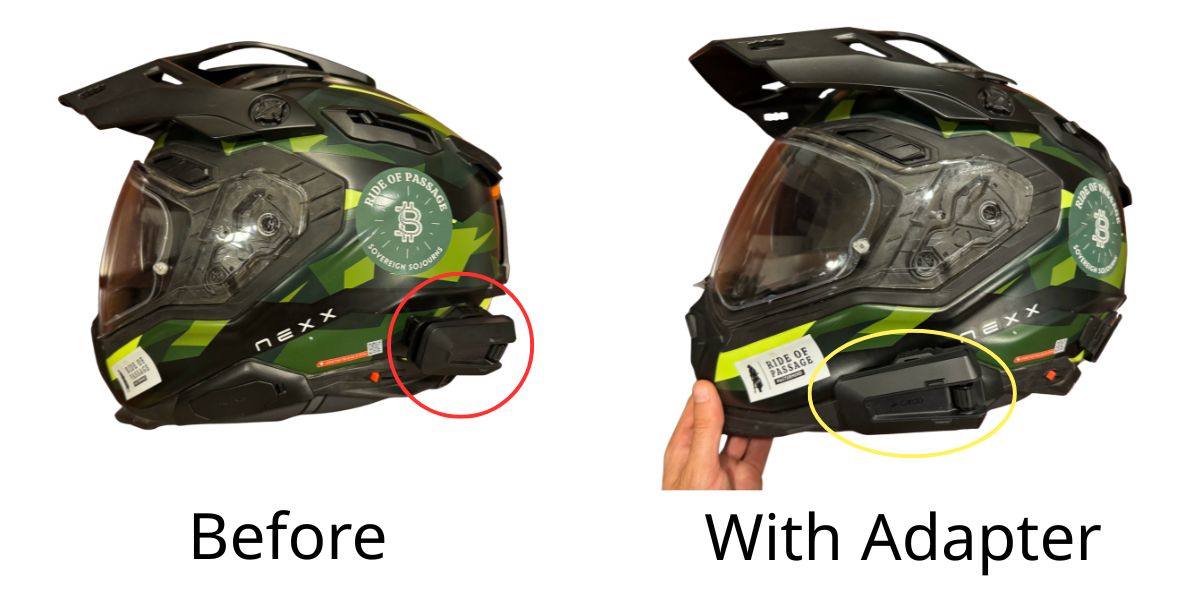
Tubs Jackson is a weird name, I know, but I have their adapter in my Nexx X.WED3 helmet and it’s rock solid. Much nicer than reaching way back to where I had the sticky mount before. I wish I’d thought of this idea.
Tip: Get FREE SHIPPING just by buying here or using code BETTERONTHEROAD at checkout.
Buying Guide: What Makes a Helmet Breathe?
Ventilation design is as much an art as a science. Here are key factors to consider when picking your next lid:
- Fit comes first. A helmet that doesn’t fit your head shape will never be comfortable, no matter how many vents it has. Round‑oval and intermediate‑oval shapes dominate the market; Arai offers long‑oval options. Try on several brands to see which cradles your skull without pressure points.
- Intake vs exhaust balance. Effective ventilation requires both intake ports to bring in cool air and exhaust ports to let heat escape. Look for helmets with at least two exhausts; high‑end models often have spoilers that create negative pressure to pull air through. Without exhausts, air stagnates and you get hot spots.
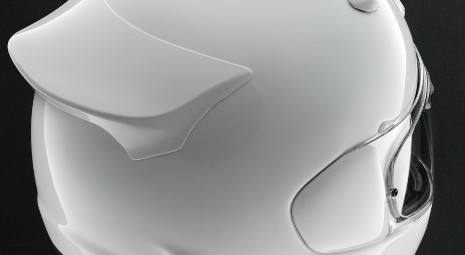
- Channel depth and EPS design. Vents are useless if the helmet’s liner doesn’t channel air across your scalp. Deeply sculpted channels, like those on the GT‑Air 3 and Strada 3, distribute air evenly rather than dumping it onto one spot. EPS foam channels are invisible from the outside but make a huge difference on long rides.
- Adjustability. Being able to open or close vents matters because temperature and speed change. Look for easy‑to‑operate sliders or switches that can be manipulated with gloves. Some helmets, like the S3 and E2, offer multiple detents for fine tuning.
- Noise trade‑offs. More airflow often equals more wind noise. Riders sensitive to noise should consider helmets with tighter seals and fewer open ports (Schuberth S3, Shoei GT‑Air 3) or be prepared to wear earplugs with breezier lids like the Krios Pro.
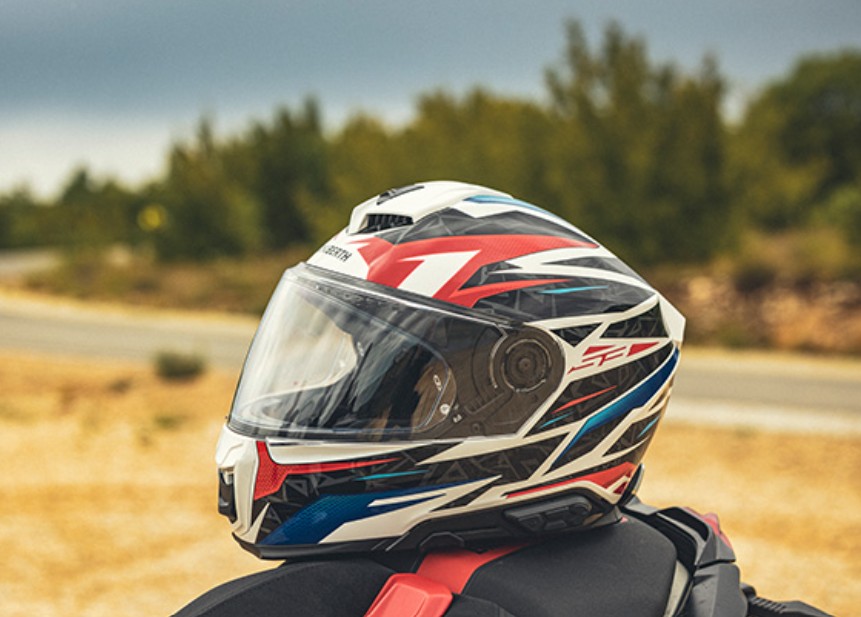
- Weight and materials. Carbon fiber and exotic composites lower weight, reducing neck fatigue. However, a heavier fiberglass helmet can still ventilate very well, as the Strada 3 demonstrates. Balance weight against budget and riding style; lighter isn’t always cooler.
- Extra features. Drop‑down sun visors add convenience but can reduce space for vent channels. Pinlock‑ready shields help manage fog. Modular helmets offer easy hydration and communication but often weigh more and can run warmer. Choose the features you’ll use.
Final Thoughts
Finding the best ventilated motorcycle helmet isn’t about chasing the most vents or the highest price. It’s about matching your riding style, climate, and comfort priorities to the right lid.
Track junkies will appreciate the hurricane‑force airflow of the Shoei X‑Fifteen. Long‑distance tourers might prefer the balanced ventilation and quiet comfort of the Shoei GT‑Air 3 or Schuberth S3. Adventure riders who sweat through slow trail sections will love the featherweight Klim Krios Pro, while commuters watching their budget will be pleasantly surprised by the Sedici Strada 3’s cooling performance. Those who crave handmade comfort with generous airflow will find a friend in the Arai Contour‑X.
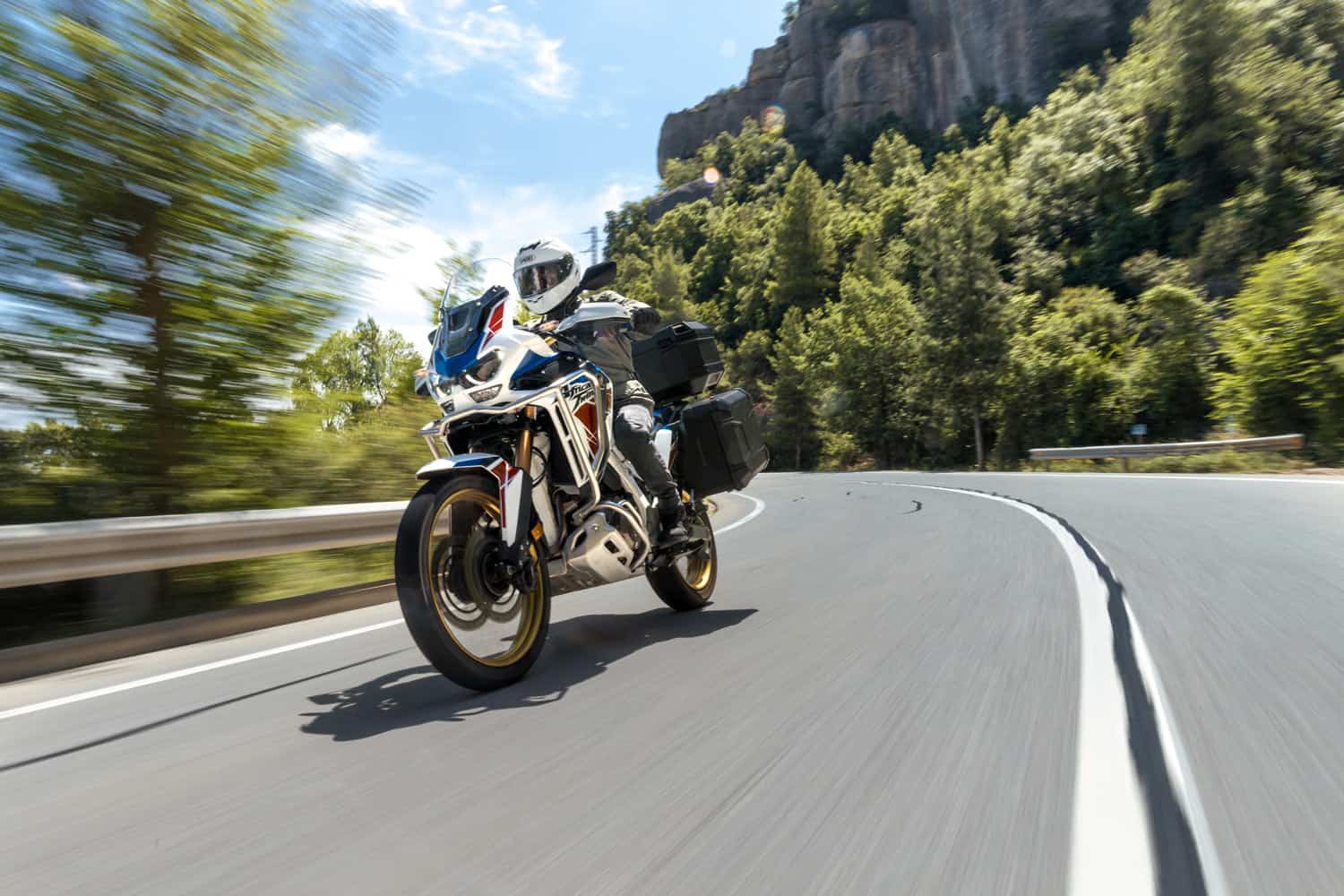
Whichever helmet you choose, remember that a proper fit and certified protection come first. Ventilation is the icing on the cake that makes every mile more enjoyable.
Related
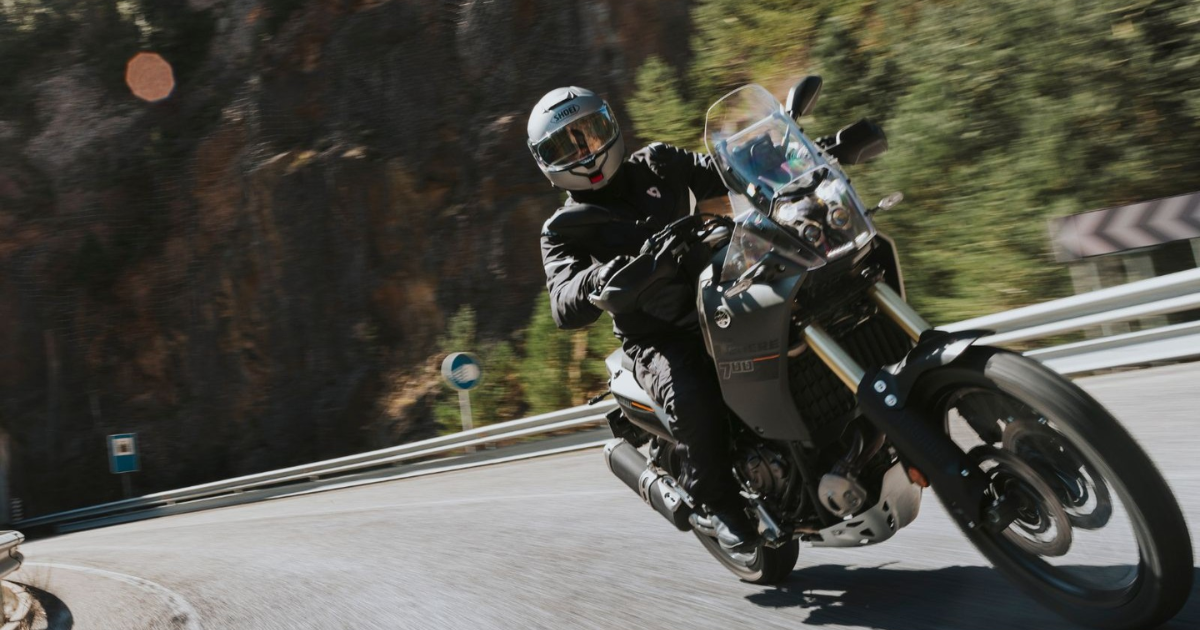
Best Quietest Modular Motorcycle Helmets: Tune Out the Wind, Not the Ride
Discover the quietest modular helmets that turn wind roar into a whisper. Protect your hearing and arrive fresh on every ride.



